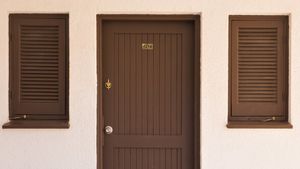JAKARTA - Astronauts aboard the International Space Station (ISS) were forced to take cover after an inactive Russian satellite broke out in orbit. The US space agency said that Russia's "Resurs-P1" spacecraft broke into at least 100 debris at around 10:00 MT (16:00 BST) on Wednesday, June 26.
Nine astronauts on the ISS, including two "strengthened" Boeing passengers, had to take shelter for about an hour due to the risk of being hit by the debris.
The P1 resurs have been inactive for nearly three years, but are most likely to experience a sudden explosion due to a fuel leak in it or the impact of other "space debris". It is not clear whether the debris from the Resurs-P1 actually hit the ISS or whether astronauts could be injured if they were doing a spacewalk.
The US Space Command, which has a global radar network of space tracking, states that this satellite will soon create "more than 100 pieces of traceable debris".
Resurs-P1 is a Russian satellite launched into space in June 2013 by Roscosmos. The satellite was designed for remote sensing of the Earth's surface, but operations stopped in 2021 due to "failure of equipment inside".
NASA ordered ISS crews to take shelter on their respective spacecraft as a standard precaution. Aircraft such as Boeing's Soyuz, Crew Dragon, and Starliner are believed to provide better protection against the debris than the ISS itself.
Russia's space agency, Roscosmos, which operates the satellite, did not respond or recognize this incident on their social media channels.
The outbreak of this satellite occurred at an altitude of about 355 km in low Earth orbit, where thousands of small to large satellites operated, including SpaceX's Starlink network and China's Tiangong space station.
According to radar of US space tracking company LeoLabs, at least 180 pieces of debris from Resurs-P1 were detected on Thursday afternoon, June 27. LeoLabs said that the result of this low-debris cloud is expected to last several weeks until several months before the danger passes.
There are no immediate details of the cause of the outbreak of the Russian Earth observation satellite, Resurs-P1, which will stop operating in 2021. However, Jonathan McDowell, an astronomer at the Harvard-Smithsonian Center for Astrophysics, speculates that an explosion could occur in it.
SEE ALSO:
NASA ordered ISS crews to take shelter on their respective spacecraft as a standard precaution. These planes are mounted on Boeing's ISS - Soyuz, Crew Dragon, and Starliner - it is believed to provide better protection against debris.
Events like these add to the common problem of "space junk" - the mass that rotates from fragments of spacecraft, machines, and other man-made objects orbiting Earth. Dead satellites remain in orbit until they descend into Earth's atmosphere to ignite themselves years later. More rarely, they fly to a "grave orbit" about 22,400 miles (36,000 km) from Earth to reduce the risk of colliding with an active satellite.
Resurs-P1 has previously lowered its altitude through other active satellite layers to re-enter Earth's atmosphere.
The English, Chinese, Japanese, Arabic, and French versions are automatically generated by the AI. So there may still be inaccuracies in translating, please always see Indonesian as our main language. (system supported by DigitalSiber.id)














